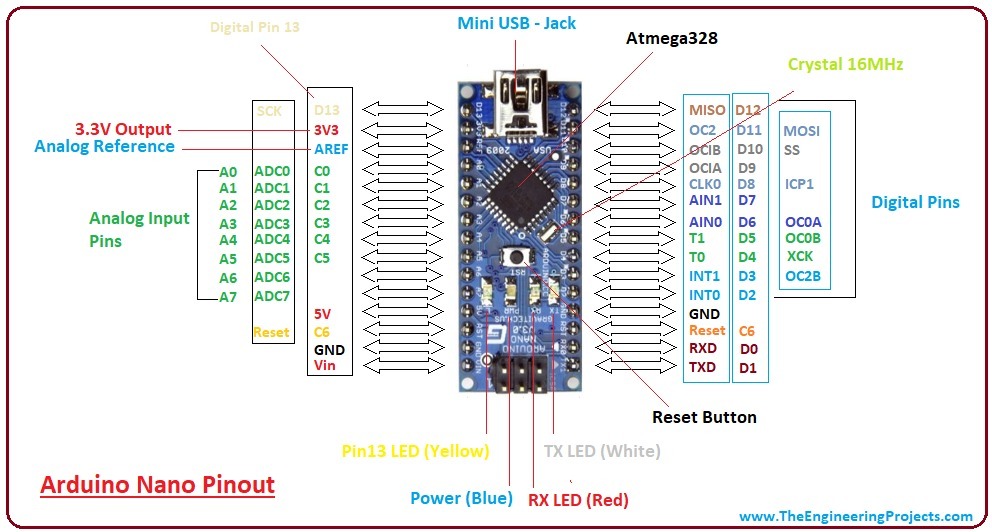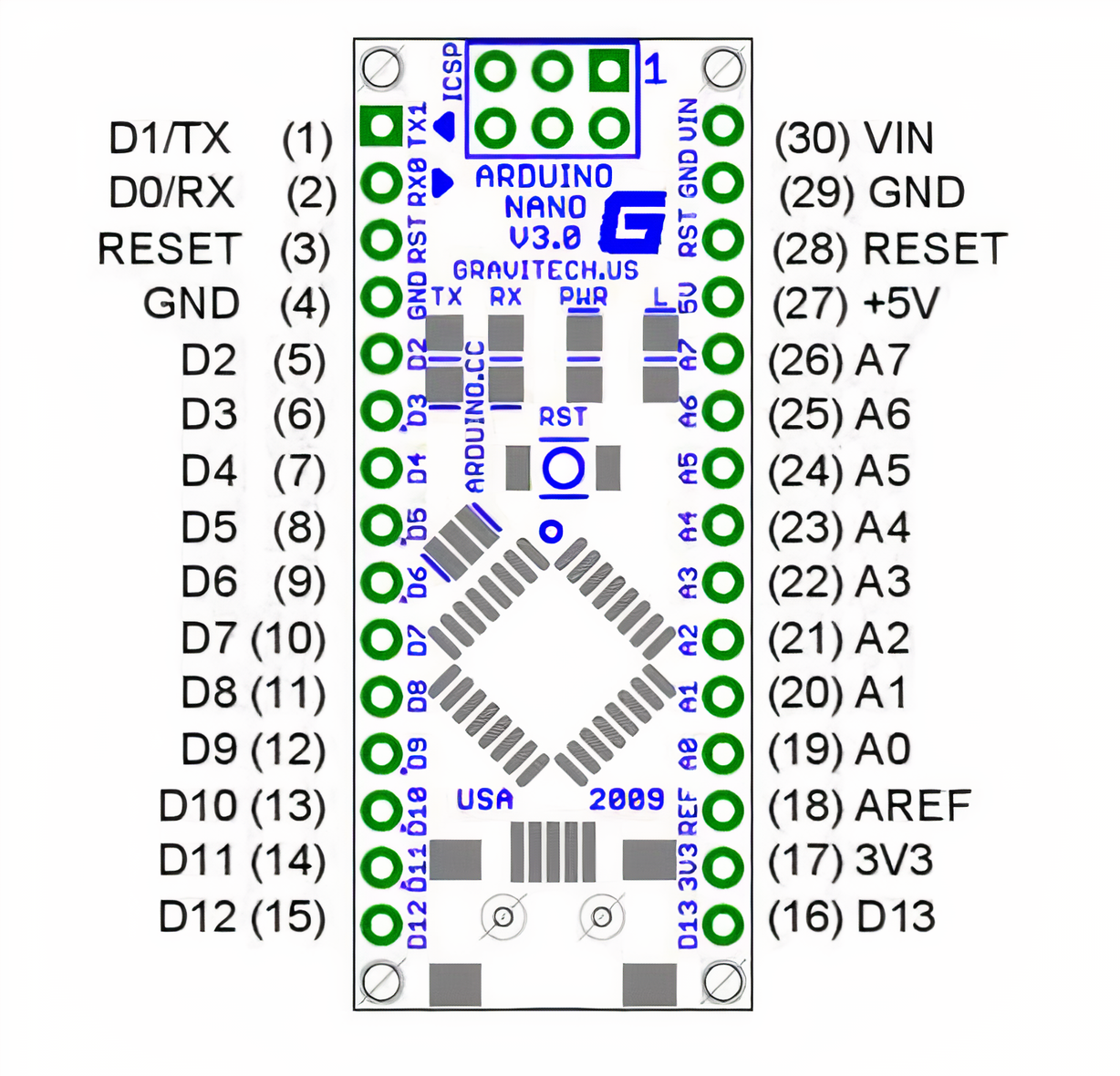

- #Arduino nano pinout numbers install
- #Arduino nano pinout numbers zip file
- #Arduino nano pinout numbers serial
#Arduino nano pinout numbers zip file
#Arduino nano pinout numbers install
For these reasons, we think it is important to learn to install Arduino Desktop IDE on your laptop. However, using the online version requires an internet connection and also may not work when using other microcontrollers (such as ESP8266, ESP32, etc.). You can use the online Arduino IDE () and for this you would need to register first. The Arduino IDE has a simple interface with many built-in examples. Unlike other microcontroller, Arduino Nano is such a tiny microcontroller that using the Arduino IDE is currently the only viable way to program it. The Arduino Nano also has 8 analog inputs (to convert a voltage level into a digital value that can be stored and processed in the Arduino Nano). When the pin is HIGH value, the LED is on, when the pin is LOW, it’s off.

Provide 8-bit PWM (Pulse With Modulation) output.
#Arduino nano pinout numbers serial

The rest ensures communication with external sensors, USB port, voltage regulator, etc.įor those interested in computer architecture, have a look at the functional diagram of an Arduino Nano:Īs any other microcontroller, Arduino Nano has a set of GPIO pins (General Purpose Input(Output pins) that we can use to “control” external sensors. On the picture above, the Arduino Nano block is where the processor and memory are located. Digital I/O Pins:Ē2 (6 of which are PWM).EEPROM:đ KB (Electrically Erasable Programmable Read-Only Memory).Analog IN Pins:Ę (10 bits of resolution, from ground to 5 volts).SRAM:Ē KB (Static Random Access Memory).Flash Memory:ē2 KB of which 2 KB used by bootloader.What is an Arduino Nano? Arduino Nano architectureĪn Arduino Nano is a very tiny and simple microcontroller: Look for instance at what we see when we zoom in the previous picture:Ī typical microcontroller includes a processor, memory and input/output (I/O) peripherals. very much like what we call an “ integrated circuit”. As we will see later in this lesson, we usually write programs using a laptop and then transfer the programs into the microcontroller to execute it. To “control” a microcontroller, you can put programs onto it and run them. The easiest way to understand what is a microcontroller is to think about a tiny computer: it includes a processor, memory and input/output (I/O) peripherials to connect small display, buttons, motors, sensors, etc.


 0 kommentar(er)
0 kommentar(er)
